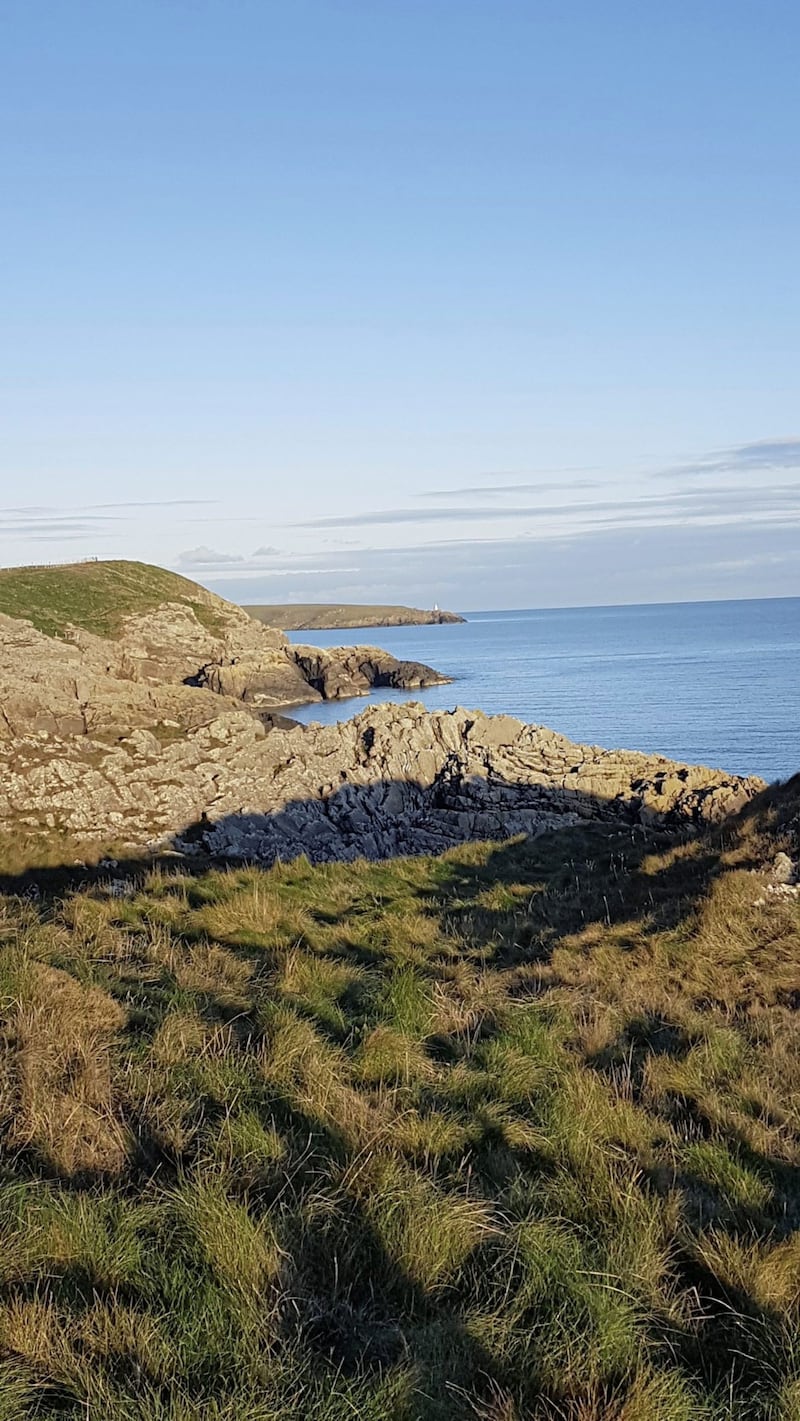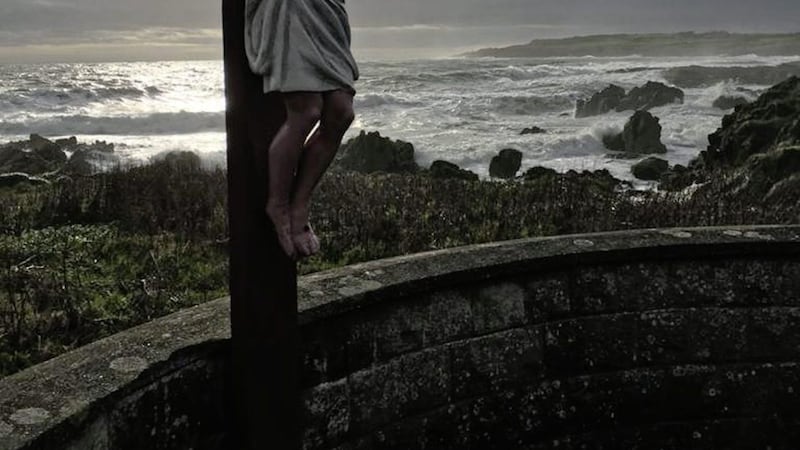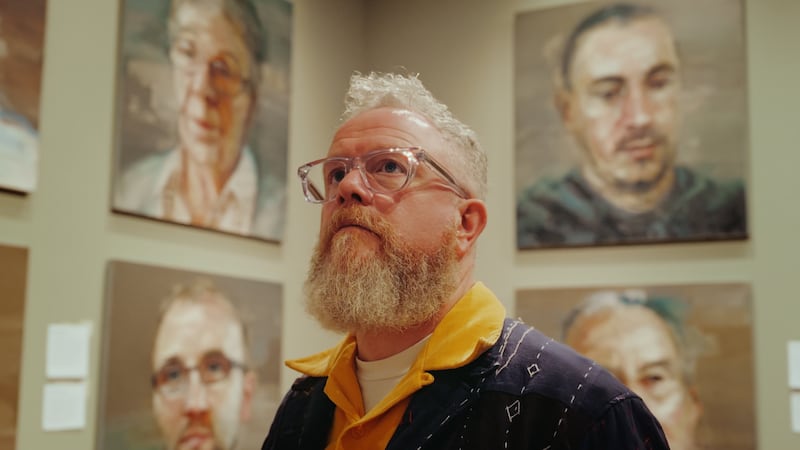WHEN Duane Fitzsimons leads pilgrim walkers to the spot where Saint Patrick landed in Ireland in 432AD, he cannot help but think of his own family's part in the drama.
Duane boasts an ancestry that is active in the ancient tale, one he regularly recounts as a pilgrim guide at the Saint Patrick Centre in Downpatrick.
He descends from the Savage family; they were Anglo-Normans who settled in Ards, Co Down in the 12th century under the leadership of John de Courcy.
De Courcy, who defeated the native Irish chieftain around 1177, became the Earl of Ulster - and a great champion of Saint Patrick.
"Before John de Courcy arrived, Patrick was kind of a forgotten character," says Mr Fitzsimons.
"It was de Courcy who re-imagined the story and had the three saints - Patrick, Brigid and Colmcille - disinterred and brought into a new tomb in Downpatrick with great pomp and ceremony, even bringing a cardinal from Rome.
"My ancestors were part of that ceremony and had they not come here, there would not have been that great appreciation of Patrick."
It was de Courcy who named the town Downpatrick. It became a very important county town in Down, with its own courthouse, cathedral and prison (where the United Irishman Thomas Russell was executed in 1803).
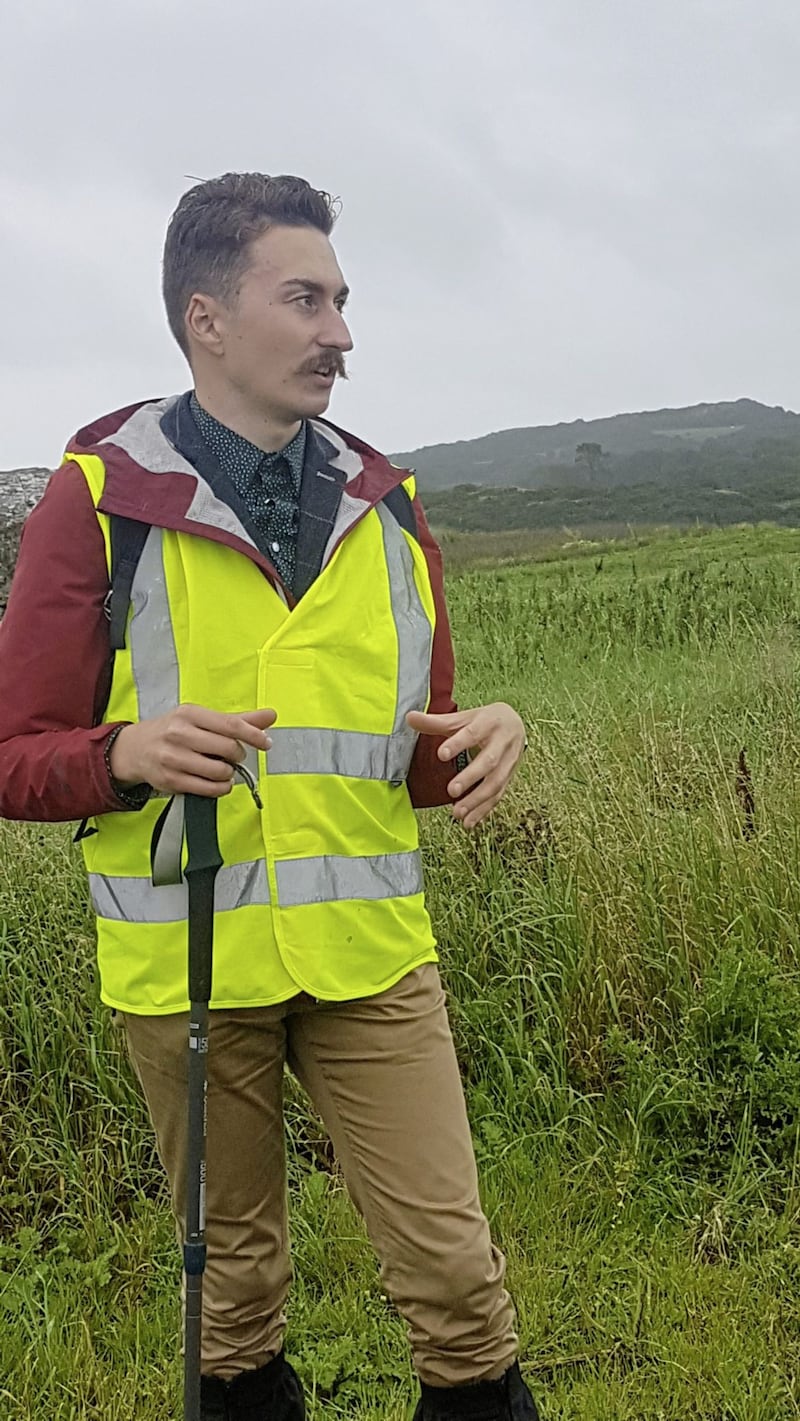
As one of the oldest towns in Ireland, Downpatrick is steeped in history as is Mr Fitzsimons, who was born and bred in nearby Ardglass and has family connections throughout the area.
He is fascinated with the story of Patrick, Celtic folklore and the Co Down landscape.
A few years ago, he created his own historic walking tour - 'Patrick and the Pagan Hills' - which is now offered by the Saint Patrick Centre during the summer season, as part of its new Saint Patrick's Way pilgrimages.
The centre itself is built less than a mile from the Mound of Down, where de Courcy conquered the chieftain, Rory MacDunleavy.
Mr Fitzsimons - a dapper 32-year-old with a sculpted moustache, patrician air and fashionably functional outdoor gear - is an architect by training.
He currently works in outdoor recreation with Belfast City Council, a post that feeds his passion for history and the outdoors.
Off-duty in Co Down, where he has researched extensively, Mr Fitzsimons has the kind of insider knowledge required to lead pilgrims off the beaten track and towards the discovery of hidden treasures.
He loves showing people what is on their doorstep - the places that inspire him and from which he draws life.
"I'm driven by a passion for telling people about where I come from. I can't imagine ever living more than a stone's throw from it," says Mr Fitzsimons.
And it's not just local people who are intrigued. Before the lockdown, Duane was leading visitors from Germany.
One of his pleasures is leading pilgrims to the spot where the Slaney River meets Strangford Lough - the place where Patrick is said to have met the brother of the chieftain Dichu, his first convert on his mission to bring Christianity to the pagans.
"There is a big surprise for walkers on this trek - and it's Strangford Lough," says Mr Fitzsimons.
"That's because they are walking so long inland, that they don't expect to arrive on the shores of Strangford where it meets the River Slaney.
"Only someone with a good local knowledge would know how to do that - I love giving them that element of surprise, when I tell them Patrick did in fact land here and you are standing here, right on the spot where Dichu stood over him and drew his sword."
Indeed, Patrick's arrival in the 5th century as a bishop was not without drama as he was initially seen as a hostile invader.
But he was able to attract the local pagans with his charisma, his ability to speak Irish and his keen knowledge of the culture, having been enslaved in Ireland for six years as a teenager.
One of his pleasures is leading pilgrims to the spot where the Slaney River meets Strangford Lough - the place where Patrick is said to have met the brother of the chieftain Dichu, his first convert on his mission to bring Christianity to the pagans
As well as the story of Patrick, Mr Fitzsimons brings to life the Celts, their pagan practices and superstitions, and the folklore around the paths that lead to Patrick's footprint.
His research is forensic and he comes across as a talking, walking history book.
"Part of the walk down to the Slaney River uses an old lane which was an Anglo-Norman highway for the gentry - the Walsh family - to get to Saul Abbey," he explains.
"Some of these routes have ostentatious Christian connections. This was a way for the landlord to get to the Abbey to say his prayers, along a more direct route."
Although his job takes him to Belfast, his heart brings him back home to Saint Patrick's Country, stretching from the coast at Ardglass to the banks of the Quoile and on to the Mourne Mountains.
Sharing the beauty of the area with friends and pilgrims has become a source of joy also.
"Friends from Belfast are blown away by the sheer beauty of it," says Mr Fitzsimons.
"There is a tranquillity about the place especially the Mourne Mountains where you feel very detached from every form of civilisation."
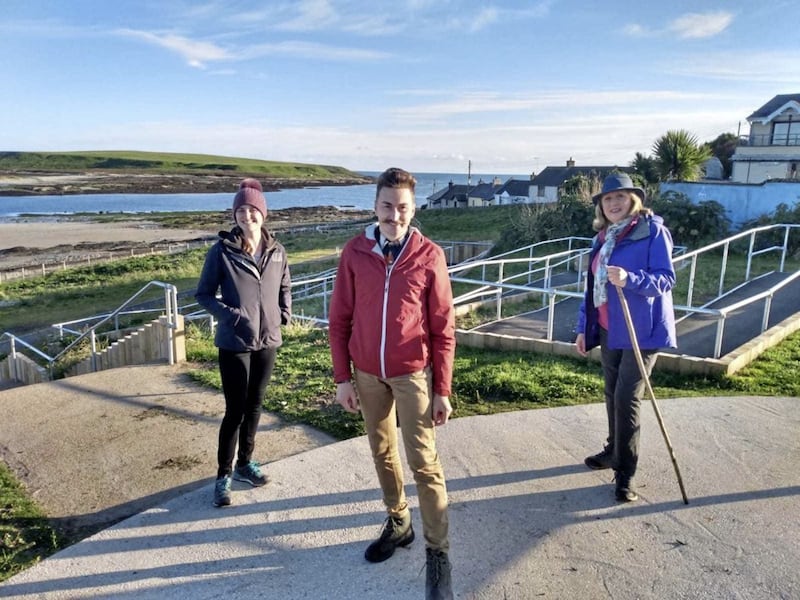
As well as his connection to the Anglo-Norman invasion, Duane's gene pool includes Anglo-Irish gentry, Scots and Manx planters, landed gentry, Catholic clergy, native Irish and Vikings.
He traces his family farm at Crossmore, near Ardglass, through seven generations.
"We are connected to the Hamiltons of Killyleagh, who have owned the castle there since the 17th century," says Mr Fitzsimons.
"I had other ancestors who came and conned people out of their land, who raided abbeys - a long, difficult history."
This connection to the history and landscape is an asset on his walks.
"What really brings it to life for people is that this is the place I call home and I have ancestors that come from this landscape, and I want to share my story with the people who are walking with me," he explains.
Mr Fitzsimons is also a four-times great nephew of Archbishop William Crolly, one of Patrick's ecclesiastical successors.
Crolly, born near Downpatrick in 1780, was an important figure in the Catholic Church.
He was appointed Bishop of Down and Connor in 1825 and during his time in the diocese he established St Malachy's College in Belfast in 1833.
In 1835 he became Archbishop of Armagh and began the construction of Armagh Cathedral - he laid the foundation stone on St Patrick's Day in 1840.
The family history also includes a nun who became a missionary in South Africa and a priest, Fr Hugh Smyth, who went to train in Paris during the French Revolution but had to hide as a medic to avoid persecution. Another connection became the first Catholic doctor in Co Down.
Mr Fitzsimons was delighted recently to show former President Mary McAleese and Portaferry-born champion runner Ciara Mageean a stunning heritage walk along the Down coast which leads to St Patrick's Well near Ardglass.
This 'St Patrick's Way by the Coast' is a very authentic walk, he says, as it was the route taken by farmers' wives who for centuries on May 1 journeyed to this ancient well with flowers to pray for a good harvest.
Duane Fitzsimons's first guided six-mile walk of the 2021 season is due to take place - Covid restrictions permitting - next month.
'Patrick and the Pagan Hills', which includes a visit to a pre-Christian burial site, a journey to the place where Saint Patrick landed in 432AD and a trip to St Tassach's Church, Raholp, will leave St Patrick's Centre in Downpatrick on April 30.
The centre is the only permanent exhibition to Saint Patrick in the world. Its director, Dr Tim Campbell, said he looked forward to the new season beginning, subject to coronavirus measures.
"Duane is an excellent guide and we are delighted to work with him," he said.
"He brings the life of Patrick into focus in a very modern way. The walks proved very popular last summer and we have a new programme to unveil.
"This is a great way to celebrate our heritage, to enjoy the beauty of the countryside and to connect with other people."
The 'St Patrick's Way by the Coast', informed by the knowledge of Duane Fitzsimons, is among the walks being led by Adoration Sisters-turned-pilgrim guides Martina Purdy and Elaine Kelly through the Saint Patrick Centre.
More information about the Saint Patrick's Way walks by visiting www.saintpatrickcentre.com or telephoning 028 4461 9000.
